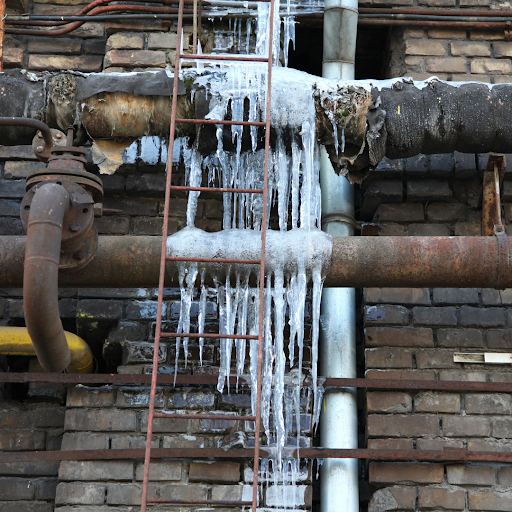Preventing Your Pipes from Freezing: Best Tips
Preventing Your Pipes from Freezing: Best Tips
Blog Article
Everyone is bound to have his or her own way of thinking involving 6 Ways to Prevent Frozen Pipes.

Winter can ruin your pipes, particularly by freezing pipelines. Here's just how to stop it from occurring and what to do if it does.
Intro
As temperature levels drop, the threat of frozen pipelines boosts, possibly bring about costly fixings and water damages. Understanding exactly how to prevent frozen pipelines is important for property owners in cool climates.
Prevention Tips
Shielding vulnerable pipes
Cover pipes in insulation sleeves or utilize warmth tape to protect them from freezing temperatures. Concentrate on pipelines in unheated or exterior areas of the home.
Heating strategies
Maintain indoor spaces effectively warmed, specifically areas with plumbing. Open cupboard doors to enable cozy air to distribute around pipes under sinks.
Exactly how to determine frozen pipes
Search for decreased water flow from faucets, uncommon smells or sounds from pipelines, and visible frost on exposed pipelines.
Long-Term Solutions
Architectural changes
Take into consideration rerouting pipelines far from outside walls or unheated areas. Add added insulation to attics, basements, and crawl spaces.
Updating insulation
Purchase high-quality insulation for pipelines, attic rooms, and wall surfaces. Correct insulation assists keep regular temperature levels and minimizes the danger of frozen pipelines.
Securing Outdoor Pipes
Yard pipes and outdoor taps
Detach and drain pipes garden hoses prior to winter season. Install frost-proof faucets or cover outdoor taps with insulated caps.
Recognizing Icy Pipelines
What triggers pipelines to freeze?
Pipes ice up when revealed to temperatures listed below 32 ° F (0 ° C) for expanded durations. As water inside the pipelines ices up, it expands, taxing the pipeline wall surfaces and potentially triggering them to break.
Risks and damages
Icy pipelines can result in water system disturbances, residential or commercial property damage, and expensive fixings. Ruptured pipelines can flood homes and cause considerable structural damage.
Indicators of Frozen Water Lines
Determining icy pipes early can avoid them from bursting.
What to Do If Your Pipelines Freeze
Immediate actions to take
If you think icy pipelines, maintain taps open to eliminate stress as the ice melts. Make use of a hairdryer or towels taken in warm water to thaw pipelines gradually.
Conclusion
Avoiding frozen pipes requires positive procedures and fast actions. By understanding the reasons, indications, and preventive measures, property owners can protect their plumbing throughout winter.
5 Ways to Prevent Frozen Pipes
Drain Outdoor Faucets and Disconnect Hoses
First, close the shut-off valve that controls the flow of water in the pipe to your outdoor faucet. Then, head outside to disconnect and drain your hose and open the outdoor faucet to allow the water to completely drain out of the line. Turn off the faucet when done. Finally, head back to the shut-off valve and drain the remaining water inside the pipe into a bucket or container. Additionally, if you have a home irrigation system, you should consider hiring an expert to clear the system of water each year.
Insulate Pipes
One of the best and most cost-effective methods for preventing frozen water pipes is to wrap your pipes with insulation. This is especially important for areas in your home that aren’t exposed to heat, such as an attic. We suggest using foam sleeves, which can typically be found at your local hardware store.
Keep Heat Running at 65
Your pipes are located inside your walls, and the temperature there is much colder than the rest of the house. To prevent your pipes from freezing, The Insurance Information Institute suggests that you keep your home heated to at least 65 degrees, even when traveling. You may want to invest in smart devices that can keep an eye on the temperature in your home while you’re away.
Leave Water Dripping
Moving water — even a small trickle — can prevent ice from forming inside your pipes. When freezing temps are imminent, start a drip of water from all faucets that serve exposed pipes. Leaving a few faucets running will also help relieve pressure inside the pipes and help prevent a rupture if the water inside freezes.
Open Cupboard Doors
Warm your kitchen and bathroom pipes by opening cupboards and vanities. You should also leave your interior doors ajar to help warm air circulate evenly throughout your home.

We are very occupied with How to prepare your home plumbing for winter weather and I hope you enjoyed reading the entire blog entry. Sharing is good. Helping people is fun. I appreciate reading our article about Preventing and dealing with frozen pipes.
More Details Report this page